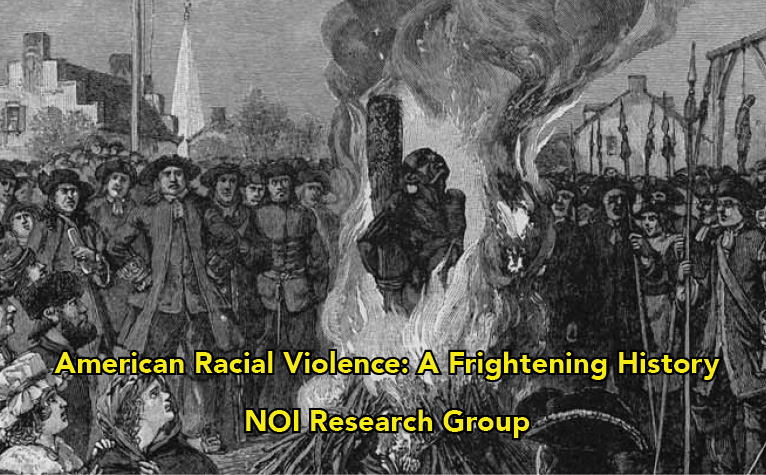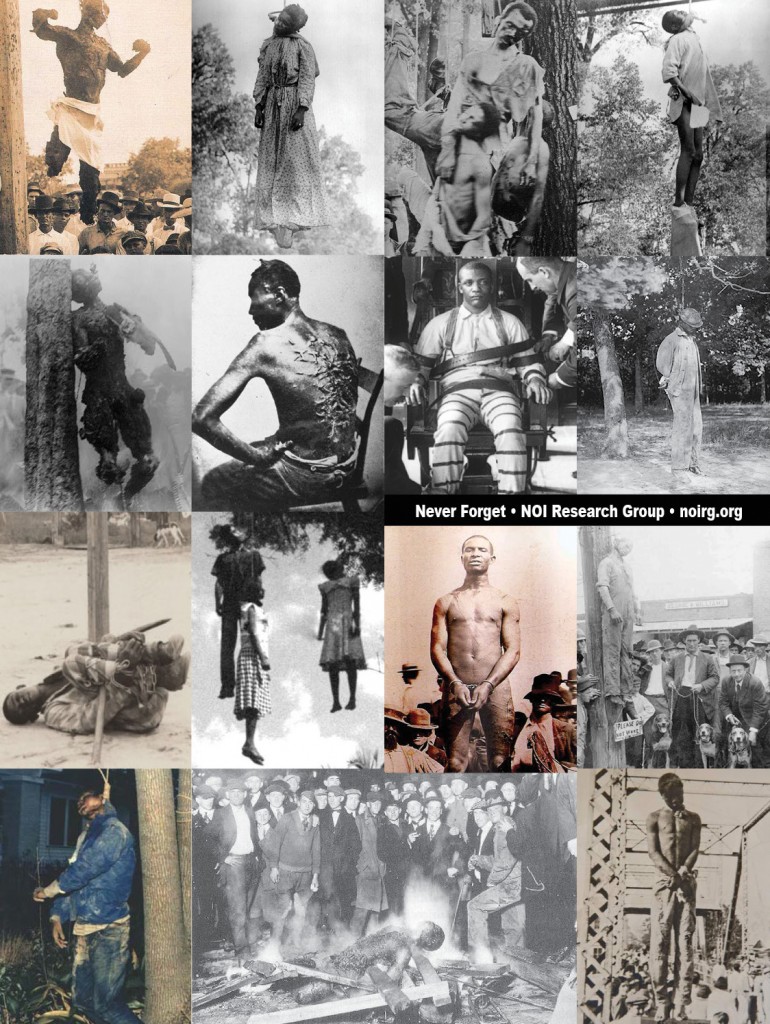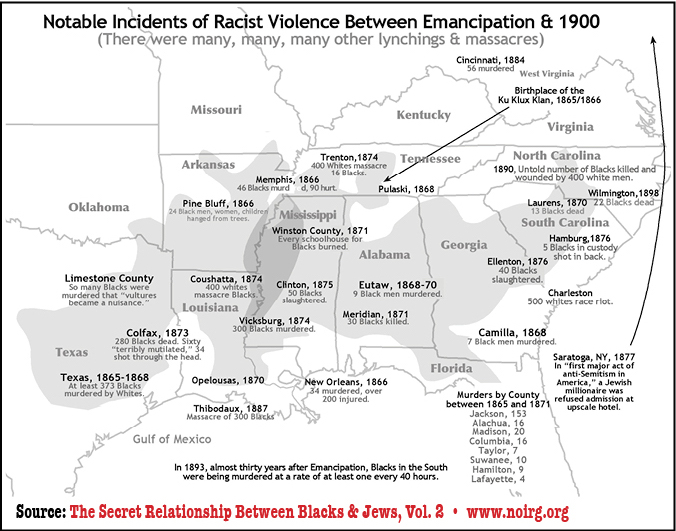American Racial Violence: A Frightening History
Nation of Islam Research Group
The Honorable Minister Louis Farrakhan mentioned the sad case in Chicago where a little boy was allegedly murdered by his father’s enemies over a bad drug deal. If it is as prosecutors say, it is a most depraved and despicable act. It is chillingly similar to the 2014 killing and burning of 3-year-old Nicola ‘Coco’ Campolongo in southern Italy, because his grandfather owed money to the mafia, according to police officials. Just last summer, a Palestinian toddler was burned to death in an arson attack by Jewish settlers with a vendetta against Palestinians.
It is a reminder that the history of organized crime—from the Red and Black Holocausts to the Irish, Italian, and Jewish mafia—has left a trail of blood all throughout American history. The Minister also counseled that we put the Chicago case in its proper historical context. That is no small matter. As despicable as it is, the Chicago killing is, unfortunately, almost unremarkable in the Black American experience.
The Indians suffered incredible acts of brutality. In one incident around 1637, a force of whites trapped some seven hundred Pequot Indians, mostly women and children, near the mouth of the Mystic River in what is now southeastern Connecticut. Englishman John Mason attacked the Indian camp with “fire, sword, blunderbuss, and tomahawk.” Only a handful escaped and few prisoners were taken—to the apparent delight of the Europeans:
To see them frying in the fire, and the streams of their blood quenching the same, and the stench was horrible; but the victory seemed a sweet sacrifice, and they gave praise thereof to God.
In New York, Dutch soldiers snatched Indian children from their mothers’ breasts and hacked them to death. Babies were bound to planks, tortured, and then murdered. Still other Indian children were thrown into the river. When those Indians who had escaped the onslaught returned the next morning,
[they] were murdered in cold blood and tossed into the fire or the water. Some came to our people in the country with their hands, some with the legs cut off, and some holding their entrails in their arms, and others had such horrible cuts and gashes, that worse than they were could never happen.
 The soldiers severed the heads of their victims, very likely playing kickball with some of them. A delighted Gov. William Kieft decorated the beasts, as eleven outraged Algonquin tribes arose in full-scale war. As one historian wrote, “[they] did their ferocious best to wipe the white man off the face of the earth.” The recent discussion about the torture of detainees by the Bush administration has shown that Americans are in a serious state of denial about the actual history of torture in America. A common theme is that “We don’t torture” in America, and one commentator suggested that the “only” time torture occurred in America was during the infamous witch trials in the colony of Massachusetts. Whites make such claims in full confidence that their image of a magnanimous America will survive historical scrutiny. It does not.
The soldiers severed the heads of their victims, very likely playing kickball with some of them. A delighted Gov. William Kieft decorated the beasts, as eleven outraged Algonquin tribes arose in full-scale war. As one historian wrote, “[they] did their ferocious best to wipe the white man off the face of the earth.” The recent discussion about the torture of detainees by the Bush administration has shown that Americans are in a serious state of denial about the actual history of torture in America. A common theme is that “We don’t torture” in America, and one commentator suggested that the “only” time torture occurred in America was during the infamous witch trials in the colony of Massachusetts. Whites make such claims in full confidence that their image of a magnanimous America will survive historical scrutiny. It does not.
Even the specific egregious act of waterboarding is not a new invention of today’s U.S. military. The same technique was used to torture Black inmates in the Georgia prison system 145 years ago. White prison officials called it “watering” then, and it consisted of
pouring a stream of water into the mouth of a convict stretched on his back; much of it got into the lungs and at best it produced a fit of choking…
Usually the inmates were just beaten with whips, but some particularly sadistic prison officials were creative in devising other forms of terror.[1] The beheadings now associated with the “radical Islamists” were most often used against Indians and known as scalping. Ben Franklin was known to have supplied “scalping knives” to the settlers for this purpose, and Massachusetts gave rewards of £5 for an Indian scalp. President Andrew Jackson (pictured on your rapidly devaluating $20 bill) kept the scalps as souvenirs. Jewish settlers re-captured escaped slaves and used their severed hands as “trophies.” Nat Turner’s freedom fighters, and many who were not involved in his great 1831 freedom struggle were decapitated, their heads impaled on stakes along the Virginia highways. Ironically, Turner warned his own troops not to torture those whites that stood in their way of freedom.
Of course, slavery spawned many techniques of punishment and restraint, for which a small industry supplied the necessary hardware. Blacks were subject to the cruelest punishments for acting on their desire for freedom or for incurring the slightest infraction. Lynchings, corpse mutilations, beheadings, live burnings, and ritual displays of amputated body parts were commonplace. There are many recorded cases of whites impaling the severed heads of Africans as a warning to other Blacks. One Massachusetts slave was “hung in chains” alive in a tree, where his body remained for twenty years. Paul Revere mentions seeing it on his famous ride for white freedom.
A shocking story is told about a nephew of Thomas Jefferson, Lillburn Lewis, of Kentucky. He enslaved about fifty Africans, whom he was known to feed sparingly and whip mercilessly. When one broke a pitcher of water Lewis collected all the slaves and ordered a rousing fire to be made. He bound the offender with cords, and laid him on a meat block, and according to one description,
seizing a broad axe, proceeded to chop him into pieces, commencing at the ankles. In vain did the unhappy victim call upon his “Master” to forgive him. In vain did he scream. Not a slave durst interfere. Casting the feet into the fire, he lectured the Slaves at some length. He then chopped off below the knees, and admonished them again, throwing the legs into the fire. He then chopped off above the knees, tossing the joints into the fire, lecturing as he proceeded. The next two or three strokes severed the thighs from the body. These were also committed to the flames. And so were the arms, head and trunk, until all was in the fire. Still protracting the intervals with lectures, and threatenings of like punishment, in case of disobedience and running away.
Whippings:
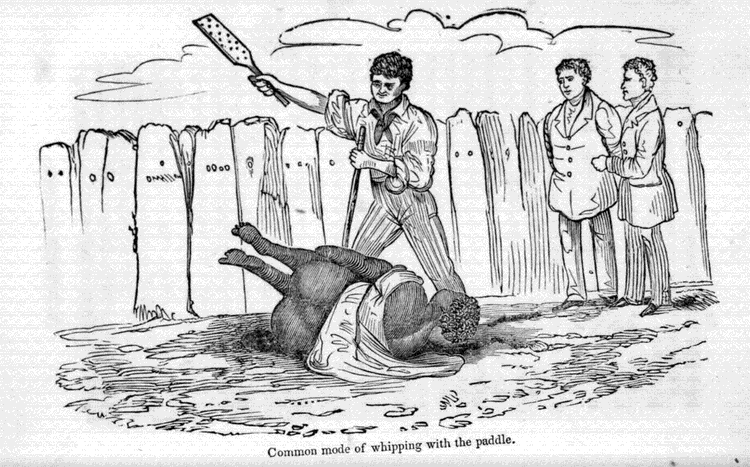 Whippings were cruel and sadistic, resulting in acute blood loss, shock, and infection, and were often fatal. One former slave wrote of having witnessed a Black man being forced to whip his own mother to death. The shrieks of horror were often audible for miles. Blacks were suspended by their wrists or stretched across the ground before a cowhide or paddle beating. These bloody, flesh-gouging floggings would sometimes last for hours, consisting of hundreds of lashes before mustard, cayenne, salt, or turpentine would be applied to prolong the pain. Pregnant woman were forced to lie face down in a “whipping hole” dug out for her belly so she could be whipped while preserving her valuable slave infant. Some Blacks were whipped until their skin was completely removed, and the slave who was forced to apply the whipping was subject to the same if he showed any mercy. A Texas slave owner enslaved about 50 Africans and his methods are described:
Whippings were cruel and sadistic, resulting in acute blood loss, shock, and infection, and were often fatal. One former slave wrote of having witnessed a Black man being forced to whip his own mother to death. The shrieks of horror were often audible for miles. Blacks were suspended by their wrists or stretched across the ground before a cowhide or paddle beating. These bloody, flesh-gouging floggings would sometimes last for hours, consisting of hundreds of lashes before mustard, cayenne, salt, or turpentine would be applied to prolong the pain. Pregnant woman were forced to lie face down in a “whipping hole” dug out for her belly so she could be whipped while preserving her valuable slave infant. Some Blacks were whipped until their skin was completely removed, and the slave who was forced to apply the whipping was subject to the same if he showed any mercy. A Texas slave owner enslaved about 50 Africans and his methods are described:
Slaves were beaten for the least offense. Oftentimes when a slave was tied down and beaten almost to death, this man…would get on the slave and walk up and down his back, stamping, occasionally saying, “if there is anything I like better than my drink, it is whipping a nigger.” Many times he would have slaves whipped to death, have a hole dug and kick the dead slaves into it.
An ex-slave recalled:
Many Blacks were whipped and put in stocks, after which slavemaster would build a fire of bark and chunk the bark while burning and let the small pieces drop on the slave while in the stocks.
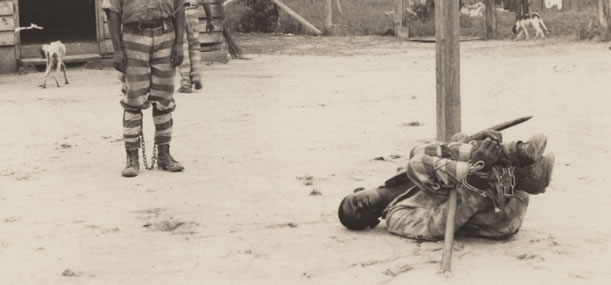
Some were put in heated or cooled enclosures for extended terms. A Surinam plantation produced the following observation:
I was informed of a most shocking instance of depravity, which had just occurred. A Jewess…put an end to the life of a young and beautiful Quadroon girl, by the infernal means of plunging into her body a red-hot poker.
The incidents of torture described in slave narratives and by abolitionists are gut-wrenching:
- Blacks were tied down on anthills and left to be eaten alive.
- Blacks were buried up to their chins for extended periods.
- Blacks would be put into stocks with their hands and feet restrained sometimes for months.
- Blacks were forced to stand in a box in which nails were placed so that they could not move while insects decimated their bodies.
- Blacks were tied to a wheel-like rack, where each limb was ceremoniously broken often for demonstration to other slaves.
- Blacks were hoisted in cages in trees and left to be eaten alive by vultures and birds of prey.
- Blacks were roasted alive in public ceremonies; fingers, toes, ears, penises were cut off and eyes plucked out.
- Metal “pokers” heated by fire were thrust into women’s vaginas as a form of execution.
- Unsubmissive Africans would be given from fifty to one hundred lashes on their naked back with a heavy plaited leather whip made of rawhide leather. Some of these whips had nine small ends plaited; this was called a cat-o-nine-tails, which would bring nine blisters at each stroke.

- If a slave began learning to write and let it be known, his fingers were cut off.
- The “Coromantyn negroes” frequently during the act of flagellation, would throw back their heads and swallow their tongue, which chokes them upon the spot, whereupon they dropped dead in the presence of their masters.
- Some Blacks would eat common earth, “by which the stomach is prevented from performing its ordinary functions, and thus dispatch themselves without any immediate pain, but linger perhaps for a twelve-month in the most debilitated and shocking condition.”
- When one master died, “the principal part of his slaves were beheaded and buried along with him…”
- Slave were fastened naked to a tree in the forest and stung to death by the mosquitoes and other insects.
- Slaves were drowned by kicking them overboard with a weight chained to their legs.
- Whites would break out the slaves’ teeth, merely for tasting the sugarcane cultivated by the slaves themselves.
- Slaves tasked to remove tobacco worms from the plant were forced to eat those that they missed.
- Slitting up the slaves’ noses and cutting off their ears—“these are accounted mere sport…”
In Surinam Black slaves were sentenced to be “broken alive upon the rack, without the benefit of the coup de grace or mercy-stroke.” The slave was laid upon a wooden cross with arms and legs extended and was fastened by ropes.
The executioner, also a black man, having now with a hatchet chopped off his left hand, next took up a heavy iron bar, with which, by repeated blows, he broke his bones to shivers, till the marrow, blood, and splinters flew about the field; but the prisoner never uttered a groan nor a sigh.
Throughout American history aroused crowds of white American citizens burned Black human beings while they were still alive, a practice that occurred well into the twentieth century. Lynchings were brutal public executions sanctioned by governments that often involved live limb removals and many other unbelievably barbaric acts of white sociopathy—to the satisfaction and cheers of thousands of approving American Caucasians. Prof. Clarence Cason describes whites’ responsibility:
This conviction that the black man must now and then be intimidated, in order to keep him from forgetting the bounds which southern traditions have set for him, is firmly rooted in the consciousness of many southern people. So unquestioned is this philosophy that at times lynchings are planned and carried through—not under the fierce compulsion of mob hysteria—[but] by men who have calmly resigned themselves to the performance of a painful duty, which, according to their lights, is necessary for the good of society.
The description of the 1904 lynching of Luther Holbert and his wife in Mississippi is indicative of many, many, many others. Holbert had rightfully killed a white man in self-defense, and his wife’s sole “crime” was her marriage to him:
The two Negroes…were tied to trees and while the funeral pyres were being prepared they were forced to suffer the most fiendish tortures. The blacks were forced to hold out their hands while one finger at a time was chopped off. The fingers were distributed as souvenirs. The ears…were cut off. Holbert was beaten severely, his skull was fractured and one of his eyes knocked out with a stick, hung by a shred from the socket….The most excruciating form of punishment consisted in the use of a large cork-screw in the hands of some of the mob. The instrument was bored into the flesh of the man and woman, in the arms, legs, and body, and then pulled out, the spirals tearing out big pieces of raw, quivering flesh every time it was withdrawn.
The mob then burned them to death, forcing the Holberts’ son to watch:
He was nearly crazed with fear, and when he saw the flames consuming his tortured parents, and heard their frightful screams, and prayers for mercy, he threw himself face downward on the ground, closing his eyes, and putting his fingers in his ears, to shut the fearful scene out from sight and hearing. After the couple were dead and only partly consumed, the mob left them and the boy took the blackened corpses of his parents, and laid them side by side in the brush, covering them over as best he could.
Mass murders of Blacks occurred with regularity and whole regions were “cleansed” of ALL Blacks. As one scholar wrote of post-Civil War whites: “They loathed the Negro and…were ready to hunt him like an animal.” So many Blacks were slaughtered in one incident in a Texas county that “vultures became a nuisance.”
[Map in The Secret Relationship Between Blacks and Jews, Vol. 2.]
Partial List Racial Attacks in America (Wikipedia)
1863: New York City Draft Riot
1863: Detroit Race Riot
Reconstruction Period: 1865–1877
1866: New Orleans Riot
1866: Memphis, Tennessee
1868: Pulaski Riot
1868: Opelousas, Louisiana
1868: Camilla, Georgia
1870: Eutaw, Alabama
1870: Laurens, South Carolina
1870: New York City Orange Riot
1871: Second New York City Orange Riot
1871: Los Angeles Anti-Chinese Riot
1871: Meridian, Mississippi
1891: New Orleans Anti-Italian Riot
1873: Colfax massacre
1874: Vicksburg, Mississippi
1874: New Orleans, Louisiana [Liberty place riot]
1874: Coushatta, Louisiana
1875: Yazoo City, Mississippi
1875: Clinton, Mississippi
1876: Hamburg Massacre
1876: Ellenton, South Carolina
Jim Crow Period: 1878–1914
1885: Anti-Chinese riot in Rock Springs, Wyoming Territory
1886: Seattle riot of 1886
1898: Wilmington Insurrection of 1898
1898: Lake City, South Carolina
1898: Greenwood County, South Carolina
1900: Robert Charles Riots
1900: New York City
1906: Atlanta Race Riot
1906: Brownsville, Texas
1907: Onancock, Virginia
1907: Pacific Coast Race Riots of 1907
1908: Springfield Race Riot of 1908
1909: Omaha, Nebraska anti-Greek riot
1910: Nationwide riots following the heavyweight championship fight between Jack Johnson and Jim Jeffries in Reno, Nevada on July 4
War and inter-war period: 1914–1945
1917: East St. Louis Riot
1917: Chester, Pennsylvania
1917: Philadelphia, Pennsylvania
1917: Houston Riot
Red Summer of 1919
*1919: Washington, D.C.
*1919: Chicago Race Riot of 1919[21]
*1919: Omaha Race Riot of 1919
*1919: Charleston, South Carolina
*1919: Longview, Texas
*1919: Knoxville Riot of 1919
*1919: Elaine Race Riot
1920: Ocoee Massacre
1921: Tulsa race riot (Tulsa, Oklahoma)
1923: Rosewood massacre (Rosewood, Florida)
1927: Yakima Valley Anti-Filipino Riot
1928: Wenatchee Valley Anti-Filipino Riot
1929: Exeter Anti-Filipino Riot
1930: Watsonville Anti-Filipino Riots, which inspired race riots in San Francisco, Salinas and San Jose and attacks elsewhere.
1935: Harlem Riot of 1935
1943: Detroit Race Riot
1943: Beaumont Race Riot of 1943
1943: Harlem Riot of 1943
1943: Zoot Suit Riots
Postwar era: 1946–1954[edit]
1946: Columbia, Tennessee Riot
1949: Peekskill Riots
1951: Cicero Race Riot in Illinois

